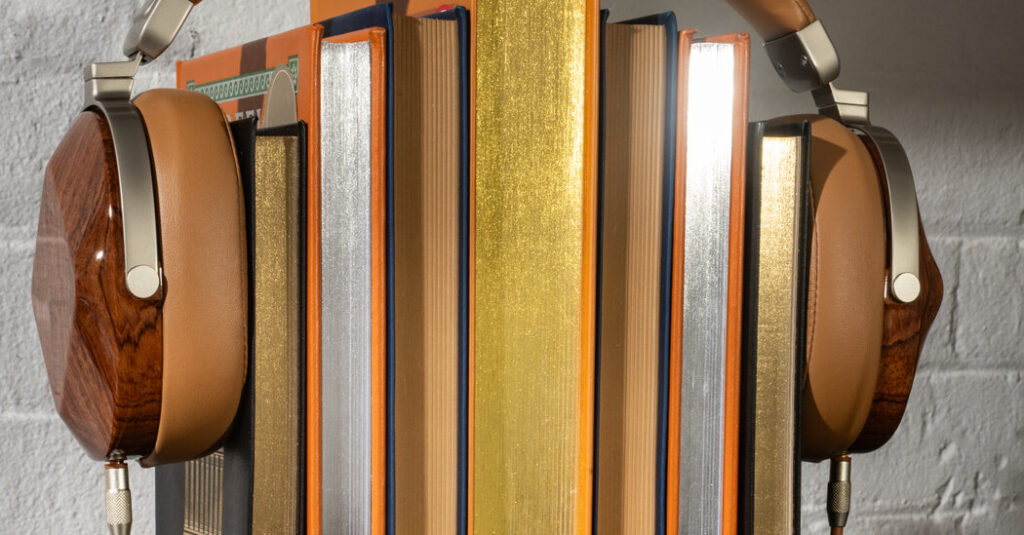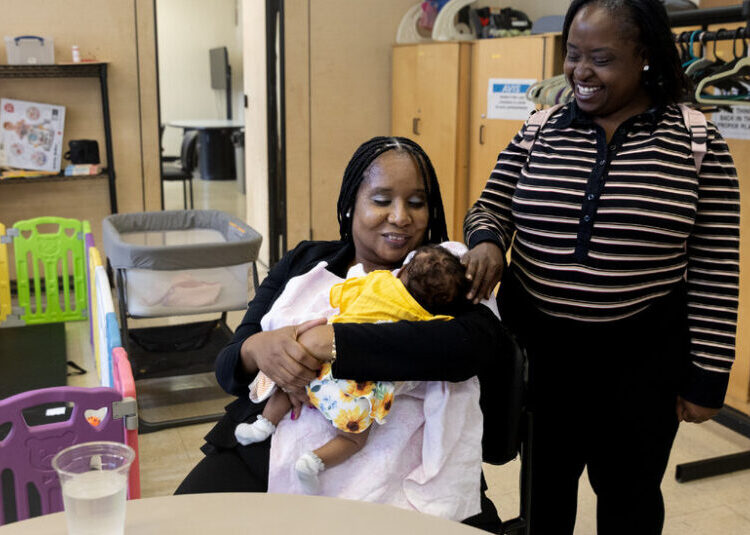As a librarian, I get a lot of questions. One I am hearing more often is: Do audiobooks qualify as reading?
Many people don’t think so. There is a pride — even a snobbishness — to being well read. Telling someone that you have only listened to a certain book usually comes out sounding like an apology. A recent NPR-Ipsos poll found that 41 percent of adults don’t believe audiobooks qualify as reading. One friend of mine, who argues with his husband over this, once memorably told me that listening to a book felt like seeing a musical in New Jersey instead of on a Broadway stage. Close, but not the real thing.
I used to feel the same way myself. A few years ago, sitting in an airport bar, I noticed a man next to me scrolling through his phone as a robotic voice read every word aloud at high speed. At first, I thought it was gibberish. Then I realized he was blind, using a feature on his iPhone that read aloud the text on his screen. Watching him — absorbed in the words, taking in their meaning — it struck me that he was reading the same way I did with my eyes.
Because I have dyslexia, reading has never come easy. After that chance encounter, I tried a similar accessibility feature on my own iPhone. It was a revelation. For the first time, I could keep up, effortlessly absorb ideas and focus in a way I hadn’t before.
My experience isn’t unusual; our definitions of reading haven’t kept up with how people actually read today.
Reading builds empathy, focus and critical thinking. But we seem to enjoy reading less and less. A recent study by researchers at University College London and the University of Florida published in iScience found a drop of more than 40 percent in daily reading for pleasure in the United States over the past two decades.
At the same time, listening to books is on the rise — a trend libraries and publishers are seeing firsthand. Audiobook sales reached about $2.2 billion in the United States last year. At the New York Public Library, audio circulation rose 65 percent in the past five years while circulation for print and e-books stayed flat — a pattern mirrored nationwide. Audio has overtaken e-books in driving growth.
So maybe, even as the traditional way of reading books is in decline, the destigmatizing of audiobooks offers a path toward a more nuanced way of thinking about literacy.
Part of the confusion comes from how we tend to think reading works. Learning to read with the eyes starts with decoding, linking letters to sounds and meaning. But once those pathways are built, the brain draws on the same language network to make sense of words, whether they arrive through sight or sound. A 2019 study in The Journal of Neuroscience by researchers from the University of California, Berkeley, found that the brains of people reading or listening to the same stories processed meaning in almost the same way. Focused listening lights up those networks just as print does.
Casual or distracted listening, like playing an audiobook while doing chores, doesn’t appear to engage those networks fully. But attentive listening can deliver the same comprehension as print reading — and for some, especially those with reading disabilities, attentive listening can improve comprehension and help them stay with the story.
In plenty of classrooms, students still track their progress in reading logs that note pages read but not listening time, sending the message that only print counts. We should give students credit for listening to books, too.
Youngsters who read daily for enjoyment tend to develop stronger skills and score higher in school — on average, roughly the equivalent of a year and a half ahead, according to Organization for Economic Cooperation and Development data on student performance in member countries. Some research suggests they’re also more likely to keep reading for pleasure later in life. According to last year’s survey by the National Literacy Trust of Britain, younger people who grew up with audiobooks and podcasts were already reporting a preference for listening over traditional text-only reading. And pairing print and audio has been shown to improve comprehension for some struggling readers, especially when decoding written text is a barrier.
I know it firsthand. I didn’t always see myself as a reader. The chance encounter at the airport changed that. One of the first books I read for pleasure using a similar text-to-speech technology was Walter Isaacson’s biography of Benjamin Franklin. I had used that method of listening and following along only for work reading, and certainly never for a book that long. But I opened it on the Kindle app on my iPhone, turned on the text-to-speech feature, and somewhere in the middle of Franklin’s life in Philadelphia, I realized I was deep in the book. It was a new feeling, one I never imagined I would have, and I wanted more.
I now read in a way that works for me. Sometimes I listen, but most of the time I read by hearing the words while following the text on my iPhone or iPad. The text scrolls while a synthetic voice reads aloud, keeping my focus anchored and my pace steady. It’s how I read everything — emails, reports, articles and books.
I read more now than I ever have. Last week alone, I moved among a few books. I listened to “Turning to Birds: The Power and Beauty of Noticing,” read by its author, Lili Taylor; and I read “Town & Country,” a novel by Brian Schaefer, and “The Buffalo Hunter Hunter” by Stephen Graham Jones, both as I heard a synthetic voice while following the text. I wasn’t thinking about the format. I was simply reading.
Tens of millions of people now read the way I do, using tools that let them listen as they follow the text, a shift scientists describe as bimodal reading. Platforms are redesigning reading around text-plus-audio without ever naming it as such.
A growing share of young people now use captions or subtitles when streaming TV shows or movies. Even companies once defined by print, like The New York Times and other major publishers, now offer articles read aloud by synthetic voices, allowing readers to follow along, merging eyes and ears in real time.
However we read — by eye, by ear or both — it all counts. What matters is that the words get in, the brain makes meaning and the identity of being a reader takes hold. We need more readers, however they get there.
Brian Bannon is the chief librarian and director of branch libraries and education at the New York Public Library.
The Times is committed to publishing a diversity of letters to the editor. We’d like to hear what you think about this or any of our articles. Here are some tips. And here’s our email: [email protected].
Follow the New York Times Opinion section on Facebook, Instagram, TikTok, Bluesky, WhatsApp and Threads.
The post Yes, Listening to a Book Counts as Reading appeared first on New York Times.




